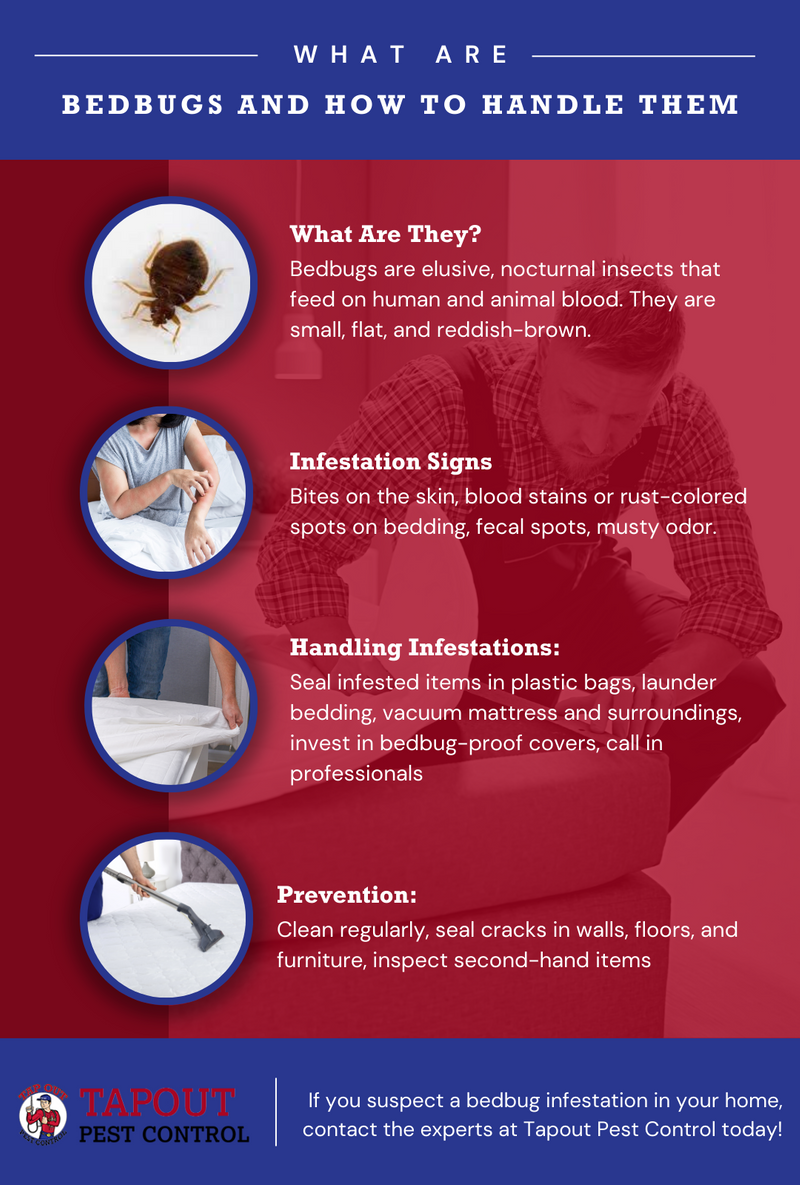The Main Principles Of Bed Bug Services
The Best Strategy To Use For Bed Bug Services
Table of ContentsWhat Does Bed Bug Services Mean?4 Simple Techniques For Bed Bug ServicesThe Main Principles Of Bed Bug Services The 9-Minute Rule for Bed Bug Services
A thorough bed bug inspection by experts is much more than a simple walkthrough and requires specialized knowledge. Bed bugs are difficult-to-detect, fast-moving pests that often dwell in small hiding places in furniture and walls. Because of their secretive nature, detailed examination is necessary to accurately locate and quantify infestations. Professional inspectors rely on specialized equipment, systematic procedures, and experience to locate pests effectively, preventing spread and further infestation.The first step in the inspection process involves understanding bed bug biology and behavior. Bed bugs belong to the Cimicidae family and experience multiple nymph stages before reaching adulthood. Adults are typically small, oval-shaped, reddish-brown, wingless, and equipped with long legs and antennae. Their feeding apparatus injects anticoagulants while drawing blood, producing skin irritation and visible marks. Knowing these traits enables detection of likely areas for bed bug activity.
Early detection is vital for preventing large infestations. Professionals look for specific indicators such as fresh droppings that resemble small ink dots, old stains, shed skins, eggs, or eggshells (Bed Bug Services). Even one female can produce dozens of eggs quickly, leading to rapid infestations if unchecked. Evidence of shed exoskeletons or leftover eggs signals ongoing activity and requires prompt inspection
Preparing for an inspection demands meticulous preparation. Inspectors often suggest tidying up spaces to allow full access, which improves access to furniture and baseboards. Bedding and linens may be cleaned thoroughly and sealed in plastic bags, and then kept in plastic bags to maintain cleanliness. Wall decor, mirrors, and pictures may need to be removed to check hiding places. Vacuuming furniture and floors helps clean up stray insects, and vacuum bags should be discarded carefully to avoid spreading.
The Only Guide for Bed Bug Services
The inspection itself is methodical and detailed. Inspectors start with beds and adjacent furniture, checking seams, folds, handles, and crevices. Upholstered furniture, including sofas and recliners, is scrutinized to reveal any hidden pests. Baseboards, moldings, the edges of wall-to-wall carpeting, electrical outlets, closets, and storage areas are also included in the inspection, as these can be common harborage sites.
Specialized tools enhance detection accuracy. Flashlights, magnifying lenses, multi-tools, and mirrors provide visibility in crevices and corners. Monitoring devices like interceptor traps or sticky pads help track bed bug activity over time. Some companies employ trained canines, which accurately identify active infestations, distinguishing them from non-active traces.

Meticulous documentation plays a critical role. Inspectors document all signs, infestation levels, and suggested measures. This provides a reference for follow-ups and helps with client communication. Residents are this page often advised not to remove blood-stained sheets or vacuum infested areas, as this maintains inspection effectiveness.
After inspection, a monitoring plan may be recommended to verify infestations and observe trends. Continuous monitoring detects reinfestation, and collecting feedback from occupants supplements physical inspection. Cooperation from residents supports the inspection process.
The Bed Bug Services Ideas

Professional inspections are more reliable than self-inspections. Trained inspectors recognize early evidence of bed bugs, prevent misdiagnosis, and provide certainty.
Bed bug inspections are particularly important in high-risk environments. Inspectors examine adjacent units, common areas, and shared furniture to identify potential spread (Bed Bug Services). This supports comprehensive control
In summary, a professional bed bug inspection involves understanding bed bug biology, preparing the space, conducting systematic inspections, using specialized tools, documenting findings, and implementing monitoring protocols. Each step contributes to accurate detection, effective treatment planning, and long-term prevention.
Bed Bug Services Fundamentals Explained
